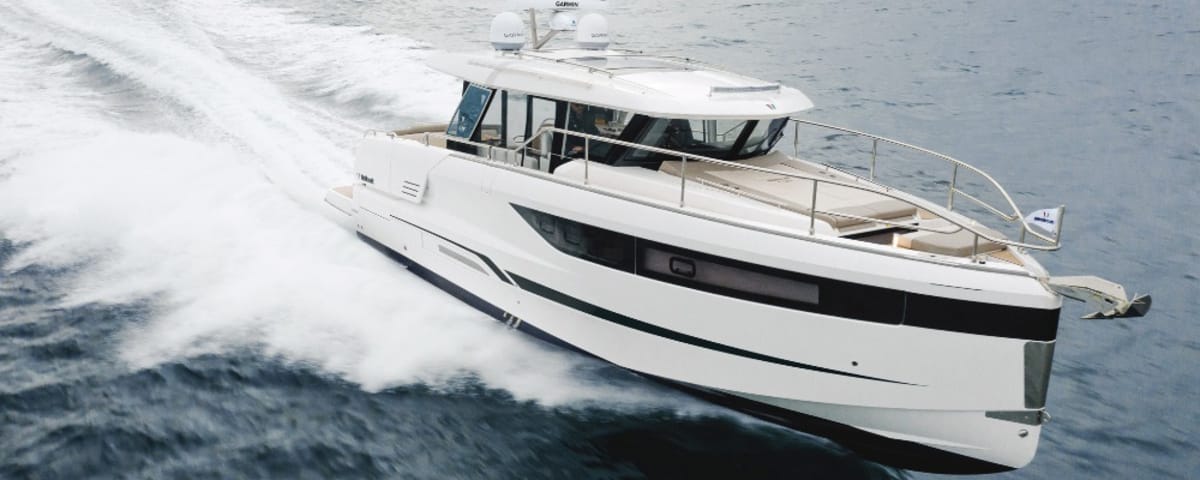Understanding Total Sea State for Safe Boating
Total Sea: A Composite Parameter
Total sea refers to the significant wave height of combined waves, meaning the average height of the highest third of waves observed at a given time, from all sources. In marine weather forecasting, this parameter is considered to most accurately reflect the “feel” of the sea state.
It’s crucial to understand what this height includes: wind sea, formed locally by the action of wind on the water, and swell, which results from a more distant wave system, often originating from a past disturbance. These two components, distinct in their origin and behavior, overlap to form the actual sea encountered by a boater.
The total sea figure isn’t a simple addition of swell and wind sea heights. It’s the result of a complex calculation based on wave energy, directions, and periods. Two wave systems that cross each other won’t have the same effect as two aligned systems: the interference between wave trains modifies the effective height and shape of the sea.
Cross Sea: When the Number Doesn’t Tell the Whole Story
Consider a concrete example: a total sea announced at 2 meters. It might seem moderate, especially if you’re on a 40-foot sailboat. But if these 2 meters result from a long westerly swell (1.4 m) crossed with a southerly wind sea (1.2 m), the water surface quickly becomes uncomfortable and difficult to read. The boat will be subjected to irregular rolling, sometimes accompanied by slamming at the bow.
In this type of configuration, it’s not so much the height that’s the issue, but the geometry of the sea. Two crossed components can generate short, disordered, unpredictable waves. This is called a cross sea, greatly feared by boaters because it makes navigation technical, tiring, and even dangerous, especially for smaller boats.
The Importance of Reading the Components
That’s why it’s essential not to stop at the total sea figure. The most complete marine weather forecasts generally allow you to consult separately:
- Swell: height, direction, and period (the time, in seconds, separating two successive wave crests in a regular series; period and wavelength are related).
- Wind sea: generally shorter, choppy, oriented in the direction of the local wind.
By cross-referencing this information, boaters can anticipate not only the height of the waves but also their dynamic behavior: frequency, regularity, direction relative to their course. A 10-second swell period is much more energetic than a short sea, and its effect on the boat, especially downwind, can be beneficial or treacherous depending on the hull and the crew’s experience.
Total Sea, Yes… But Not Alone
Total sea remains an excellent warning indicator. From 2.5 meters, navigation becomes seriously challenging for most recreational boats. But it’s the nature of the components and their relative orientation that makes the difference between a manageable sea and a difficult sea.
It’s also important to keep in mind that “significant height” remains a statistical value. This means that some waves will exceed this height by 40 to 60%. In other words, if the total sea is announced at 2 meters, you should expect to occasionally encounter waves of 3 to 3.5 meters, which is confirmed by observations at sea.
In Practice: What the Boater Should Look At
Before each outing, it’s therefore advisable to consult:
- The total sea height.
- The heights, directions, and periods of the swell and wind sea.
- And their orientation relative to the planned route.
The same figure can correspond to radically different realities: a calm sea, comfortable downwind, or a short and difficult sea upwind. To prepare your crew, choose your departure time, or decide to postpone, this level of understanding is essential.
Total sea is a useful indicator, but never sufficient on its own. To navigate safely and in good conditions, you must learn to decipher its components. This analysis quickly becomes a habit for experienced boaters: it transforms weather consultation into a true strategic decision-making tool.
Enjoyed this post by Thibault Helle? Subscribe for more insights and updates straight from the source.


